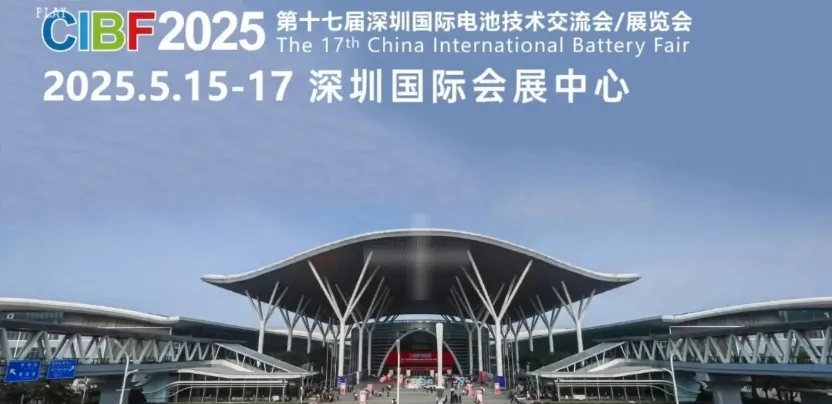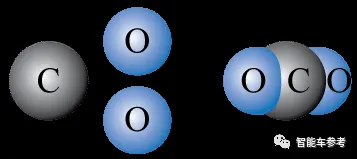Core Tip: Lithium battery range has been a major problem for electric vehicles, and lithium battery flammability is also a headache for battery developers. Therefore, the battery technology research breakthrough has beenLithium battery range has always been an electric car a "big problem", and lithium battery flammable body, but also let the battery developers headache. Therefore, the battery technology research breakthroughs has been a hot topic of concern, so what technology breakthroughs in November by the people's attention?
1.1.1 Super-speed aluminum batteries are introduced, which are expected to replace lithium-ion batteries.
ITRI and Stanford University have cooperated in the development of an ultra-rapid aluminum battery. According to reports, this is called "URABat" ultra-speed aluminum batteries, charging time is only 1 minute, charging and use of the process, the charging efficiency is always maintained at more than 98%, and can be recycled 10,000 times.
It is reported that the main materials of this super-speed aluminum battery are graphite and aluminum, which can be arbitrarily deformed or even damaged without any safety hazards. Compared with lithium batteries, the safety is greatly improved.
Some believe that this URABat Ultra Rapid Aluminum Battery can replace lithium-ion as the future leader in rechargeable batteries.
2. New progress in graphene flexible supercapacitor research at Dalian Institute of Physical Chemistry
In recent years, the concept of flexible electronic products has been put forward, and there is an urgent need to develop micro energy storage devices with high energy storage density, flexibility and functional integration that are highly compatible with them.
A research team from Dalian Institute of Physical Chemistry, Chinese Academy of Sciences, has successfully prepared graphene-based high-power planar micro-supercapacitors by combining methane plasma reduction technology and lithographic micromachining technology in their previous research.
These flexible and miniaturized supercapacitors show important application prospects for future electronic devices. Therefore, this research has also been funded by the National Youth Thousand Talents Program, the National Key Research and Development Program, the National Natural Science Foundation of China, and the Natural Science Foundation of Liaoning Province.
3. Progress in research on ternary layered NMC materials for lithium batteries
Professor Pan Feng's team at the School of New Materials, Shenzhen Graduate School, Peking University, has recently discovered through first-principle calculations and experimental validation that the stability of ternary layered cathode materials is related to the most unstable oxygen in the lattice structure, which in turn is determined by its basic coordination unit. Through this model, they systematically revealed the modulation of oxygen stability by the content of lithium, the content and valence of transition metal elements, and the Ni/Li antisite defects in the layered materials.
This will provide important clues and theoretical guidance for the optimization of the stability of lithium-ion batteries with ternary layered materials in the future. The above research results were published in full text form in the internationally renowned journal Journal of the American Chemical Society (J. Am. Chem. Soc., 2016, 138, 13326, 13334).
4. Nankai University makes significant progress in electrode materials for flexible lithium-sulfur batteries
Recently, Niu Zhiqiang's research team at Nankai University prepared self-supported flexible graphene/sulfur nanocomposite films by combining in-situ composite and metal reduction self-assembly methods, in which graphene has a continuous network-like structure in the composite film, and sulfur is uniformly dispersed on the surface of graphene, and graphene's continuous network-like structure not only provides an effective pathway for ion and electron transport, but also effectively adsorbs polysulfides and inhibits their dissolution.
5. "Human gut stimulation" extends battery life
According to foreign media reports on October 26, is committed to the development of a new generation of battery researchers in the experiment found that the human intestinal internal villous structure in the finger-like protrusions, can provide a solution to the traditional battery easy degradation.
According to the study's author, Dr Paul Coxon, from the Department of Materials Science and Metallurgy at the University of Cambridge, the team used zinc oxide wires to build a fluffy structure similar to the internal structure of the human gut, and placed it on the surface of one of the battery electrodes, which effectively traps the surrounding active material that is about to be lost, preventing battery degradation from occurring, and thus significantly extending the battery's life. This significantly extends the life of the battery.
This discovery solves a key technical problem hindering the rapid development of a new generation of batteries, which is of great significance, but because of the difficulties that need to be overcome still exists, the battery is put into mass production is yet to be a matter of time.
6. Toyota eliminates the biggest culprit in lithium battery life reduction, boosting range by 15%.
Toyota, in collaboration with a Japanese public laboratory and four universities, found that uneven movement and aggregation of lithium ions in the electrodes is the biggest culprit limiting battery life and range, a phenomenon that can also lead to overheating.
Toyota has now developed a new model of battery that effectively inhibits the uneven movement and polymerization of lithium ions in the electrodes, and this new battery can increase the mileage and battery life of electric vehicles by up to 15 percent. At the same time, battery safety is also higher.
Unfortunately, Toyota has not revealed when it will mass-produce the new batteries, so it will be a longer time before we see cars with these high-performance range batteries.
7. U.S. Universities Develop "Perfect Replacement" for Lithium Batteries
According to foreign media reports, the University of Central Florida (UCF) scientific team has developed a "super battery" that can store more energy. Traditional lithium battery charging 1500 times after the performance will begin to have different degrees of attenuation, and this supercapacitor can be used continuously for 30,000 times the performance will not decline.
The supercapacitor developed by the Central University (UCF) team is described as consisting of millions of wires just a few nanometers long, each wrapped in a two-dimensional material. The ultra-high conductivity can accelerate the speed of electron movement and transfer, enabling the battery to be charged and discharged ultra-fast. In the future, this capacitor could be used in devices such as electric cars, and it is extremely flexible and bendable, so it could also be combined with wearable devices.
According to reports, the commercial mass production of the super battery is still some time away, and this product is more of a way to bring some new insights into the development of battery technology.
8. Beijing Jiaotong University develops lithium-rich nanomaterials with high multiplicity performance
Linjing Zhang et al. from Beijing Jiaotong University developed a two-step hydrothermal method to synthesize lithium-rich nanomaterials with high multiplicity performance, which has good cycling and multiplicity performance, with the specific capacity up to 238.7 mAh/g at a multiplicity of 1C, and at a multiplicity of 10C, the specific capacity is still up to 182.7 mAh/g.
Linjing Zhang synthesized Li[Li0.2Ni0.2Mn0.6]O2 materials using a two-step hydrothermal method, which consists of two main steps, the first step utilizes glucose to synthesize carbon microspheres hydrothermally at 180 °C, which serves as the template for the second part. In the second step of the hydrothermal synthesis process, the acetate of Ni and Mn is used as the raw material to synthesize lithium-rich materials at 450 ℃, and the morphology and structure of the lithium-rich material Li[Li0.2Ni0.2Mn0.6]O2 is improved by adding different amounts of carbon microspheres synthesized in the first step of the process, and the templates of these added carbon microspheres are decomposed during subsequent sintering, so that there is no residual carbon material.
9. Northwestern University made a number of breakthroughs in the industrialization and application of graphene
November 12, the reporter learned from the Northwestern University graphene preparation technology and industrial application group, the team in graphene research and industrialization of a number of breakthroughs, so that the battery volume shrinkage, capacity increase is possible.
The group has realized the batch preparation of high-performance graphene with a batch yield of kilograms.
Up to now, the group has completed the industrialization amplification test of graphene-modified graphite lithium anode materials with a batch production of 500 kg, and the product performance has reached the national standard high-performance graphite anode material index. At the same time, the laboratory prepared a variety of more than 1000mAh / g (mAh per gram, mass ratio capacity unit) graphene lithium battery anode materials, synchronized with international research.
The group is actively building a platform to promote the industrialization of graphene lithium battery anode materials with gram capacity close to or greater than 500Amh/g as soon as possible.
10. Qingdao Energy Research Institute (QERI) made progress in the research of high energy density solid state battery
The team creatively put forward the design concept of "rigid-flexible" polymer electrolyte, innovatively constructed the composite electrolyte material system, and prepared a series of solid polymer electrolyte systems with excellent comprehensive performance, effectively solved the problem of polymer electrolyte that could not take into account all the properties, and developed a new type of key materials for solid electrolyte. system.
Currently in the device preparation of solid-state monomer batteries, Qingdao Energy Storage Institute, has developed 6Ah high-capacity ternary solid-state lithium batteries. Energy density of more than 250Wh / kg, cycle life of more than 500 laps, through the five times through the nail experiment, solid-state battery did not fire and explosion, excellent safety performance, and in the removal of the nail after the voltage has recovered, which once again highlights the good self-repairing performance of the solid-state electrolyte and safety performance.
In addition, the solid-state lithium battery with high mechanical strength has passed the 11,000-meter simulated deep-sea pressure chamber experiment, and is now preparing for the deep-sea piggyback experiment. The related technology has applied for 29 Chinese invention patents and 3 international PCT patents.
From the above 10 scientific research breakthroughs we can find that the popular battery technology research can be divided into three kinds: 1) instead of lithium-ion battery technology, such as solid-state batteries, aluminum-air batteries, lithium-sulfur batteries, etc.; 2) the development of high-performance electrode materials technology, such as lithium-rich materials, etc.; 3) graphene in the lithium battery application technology.




